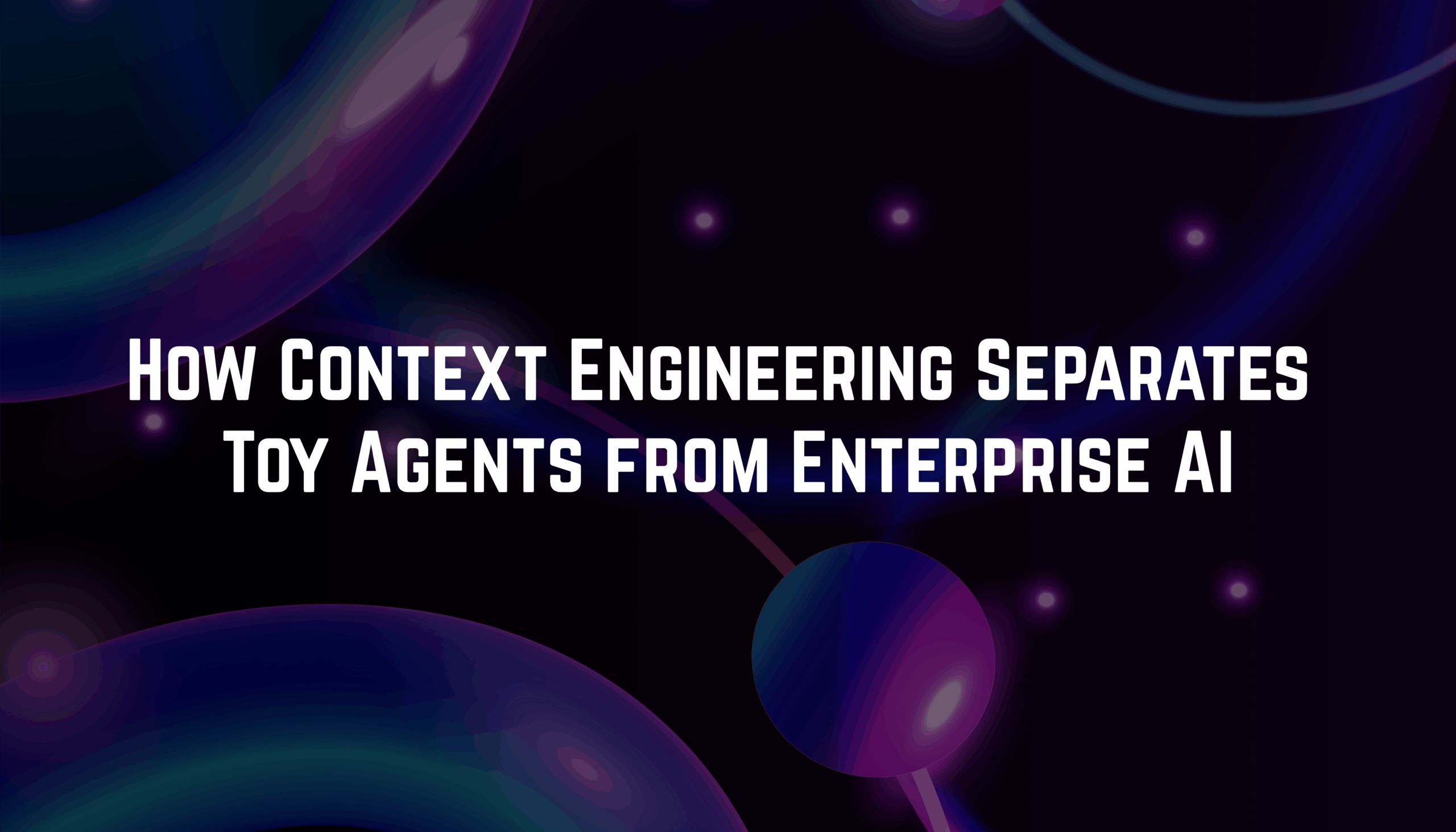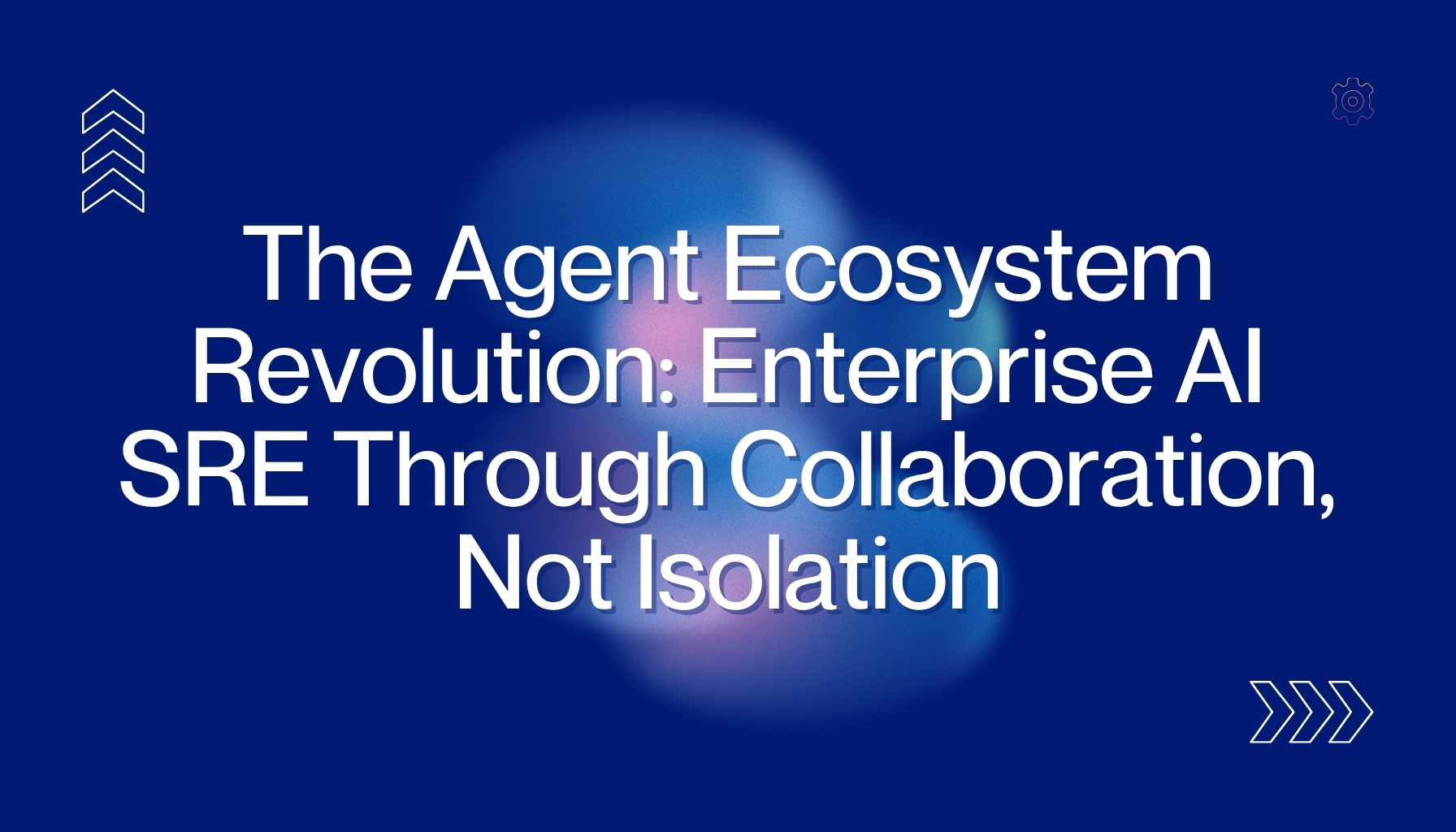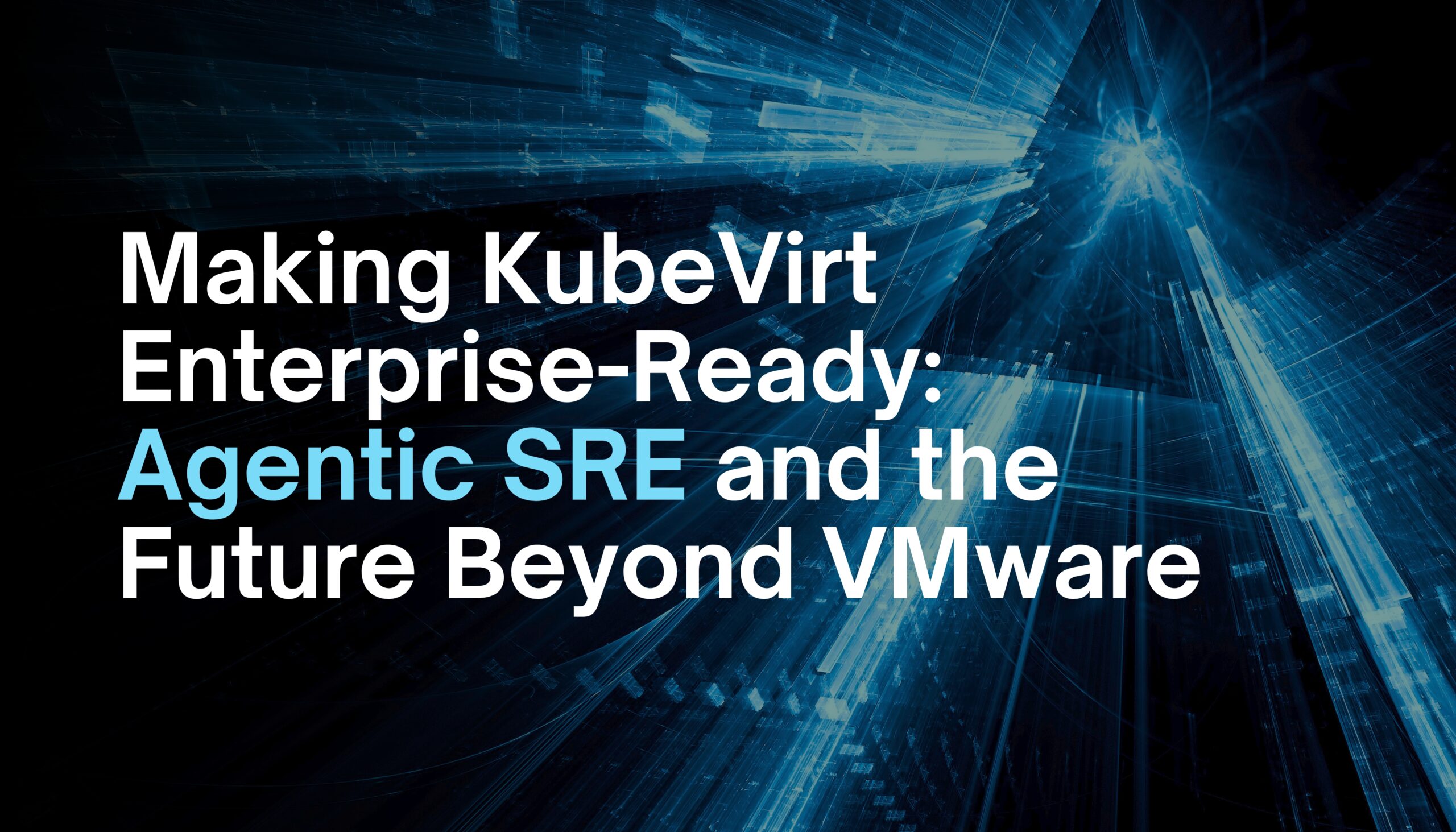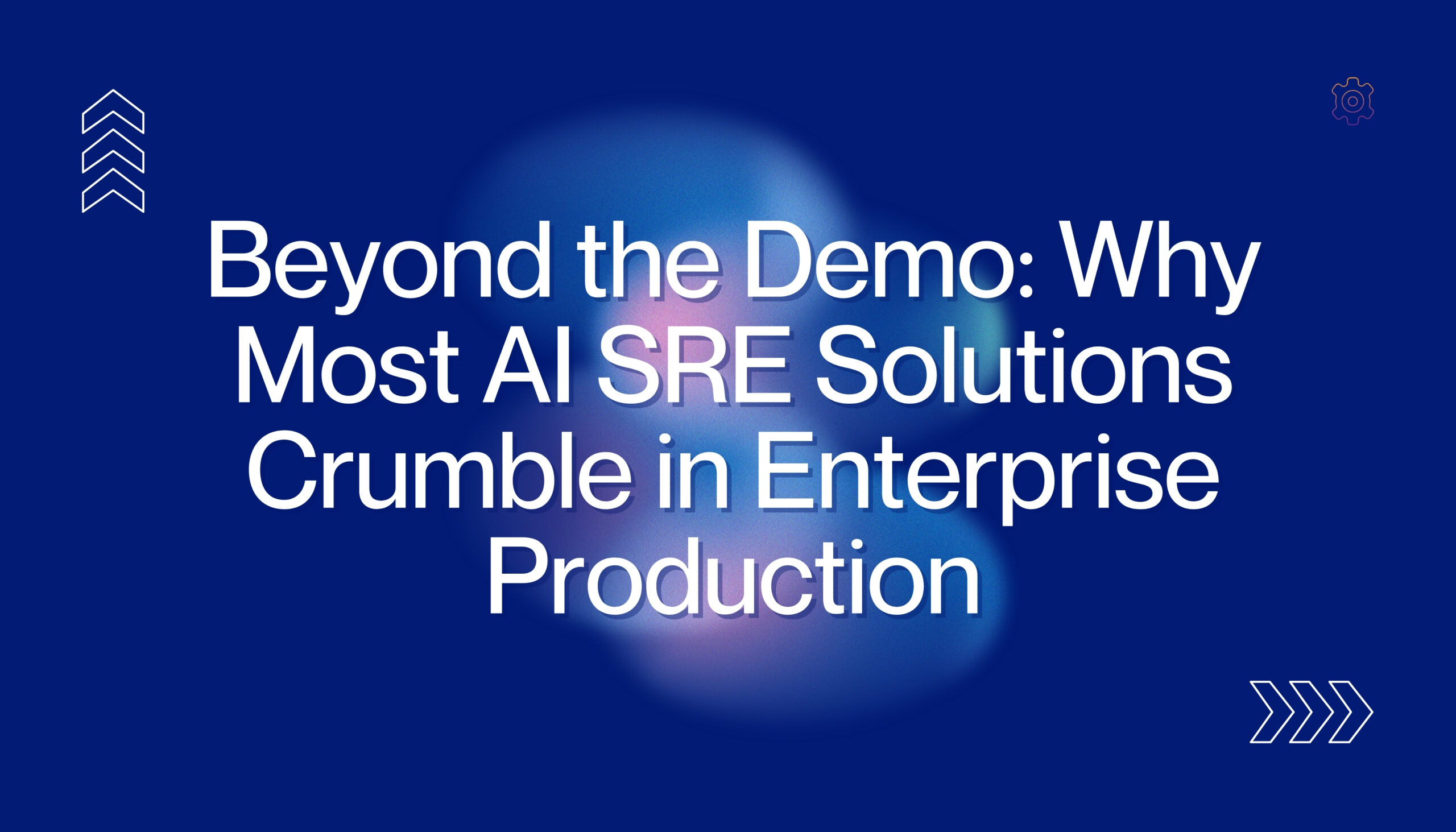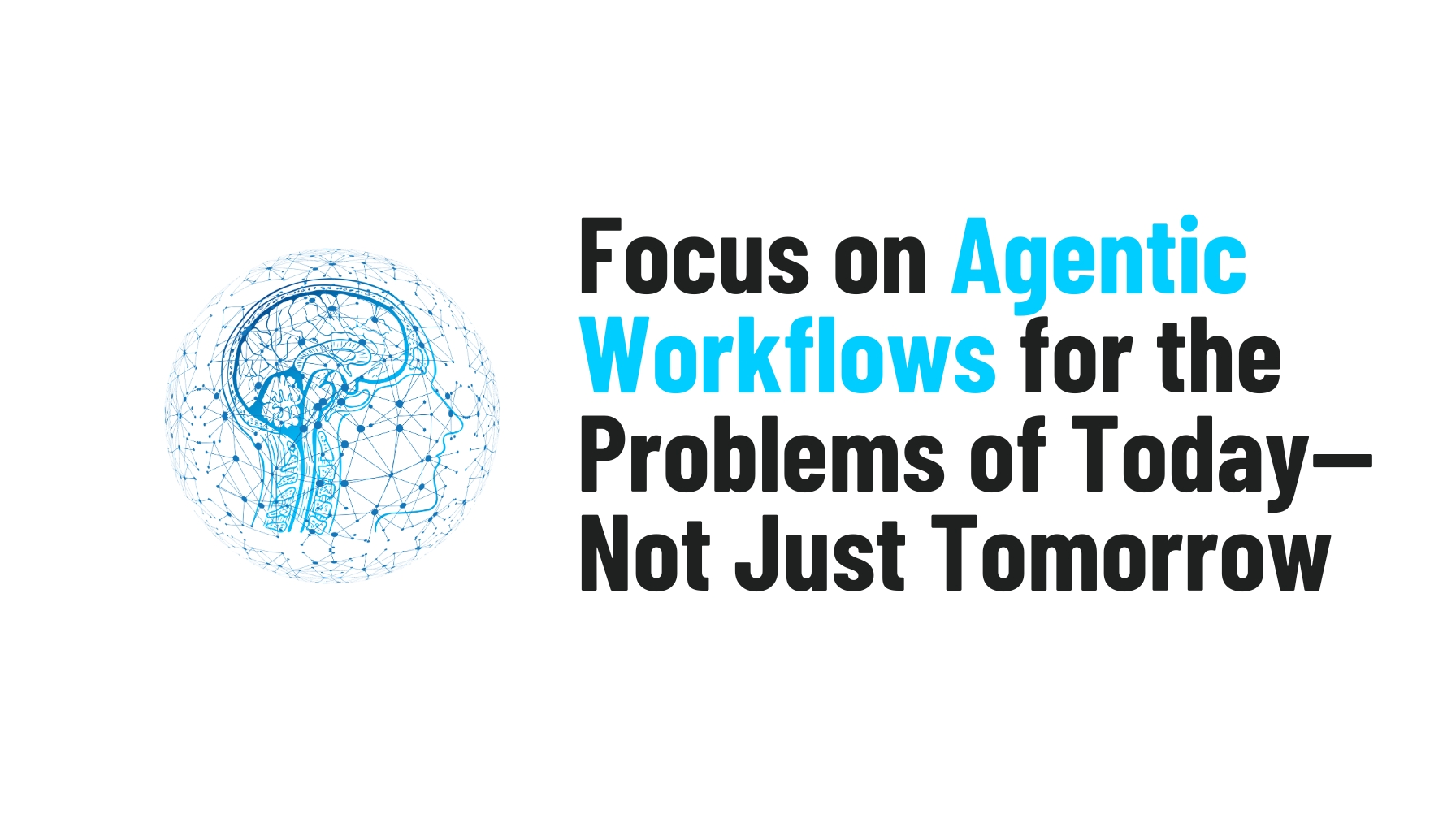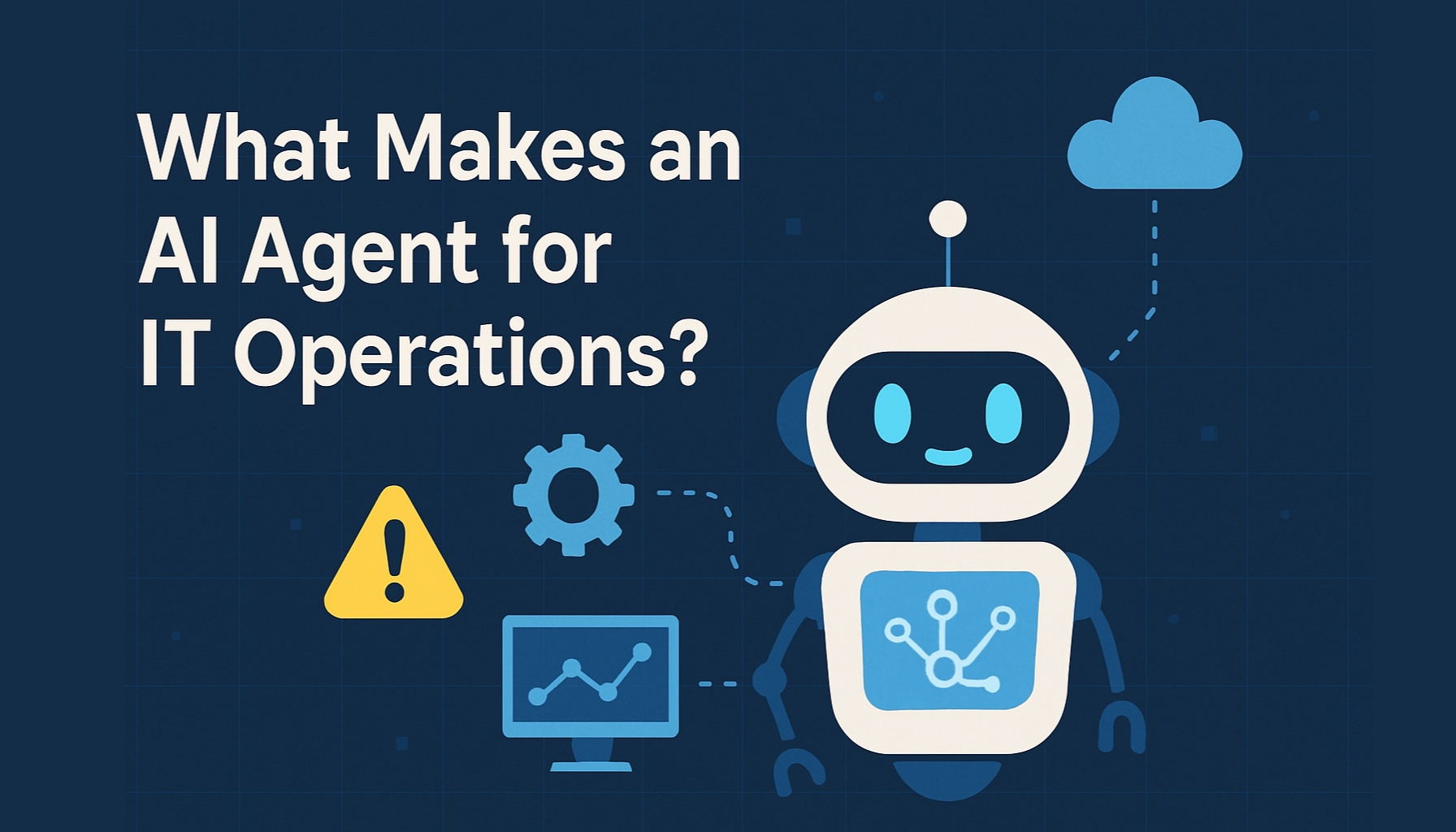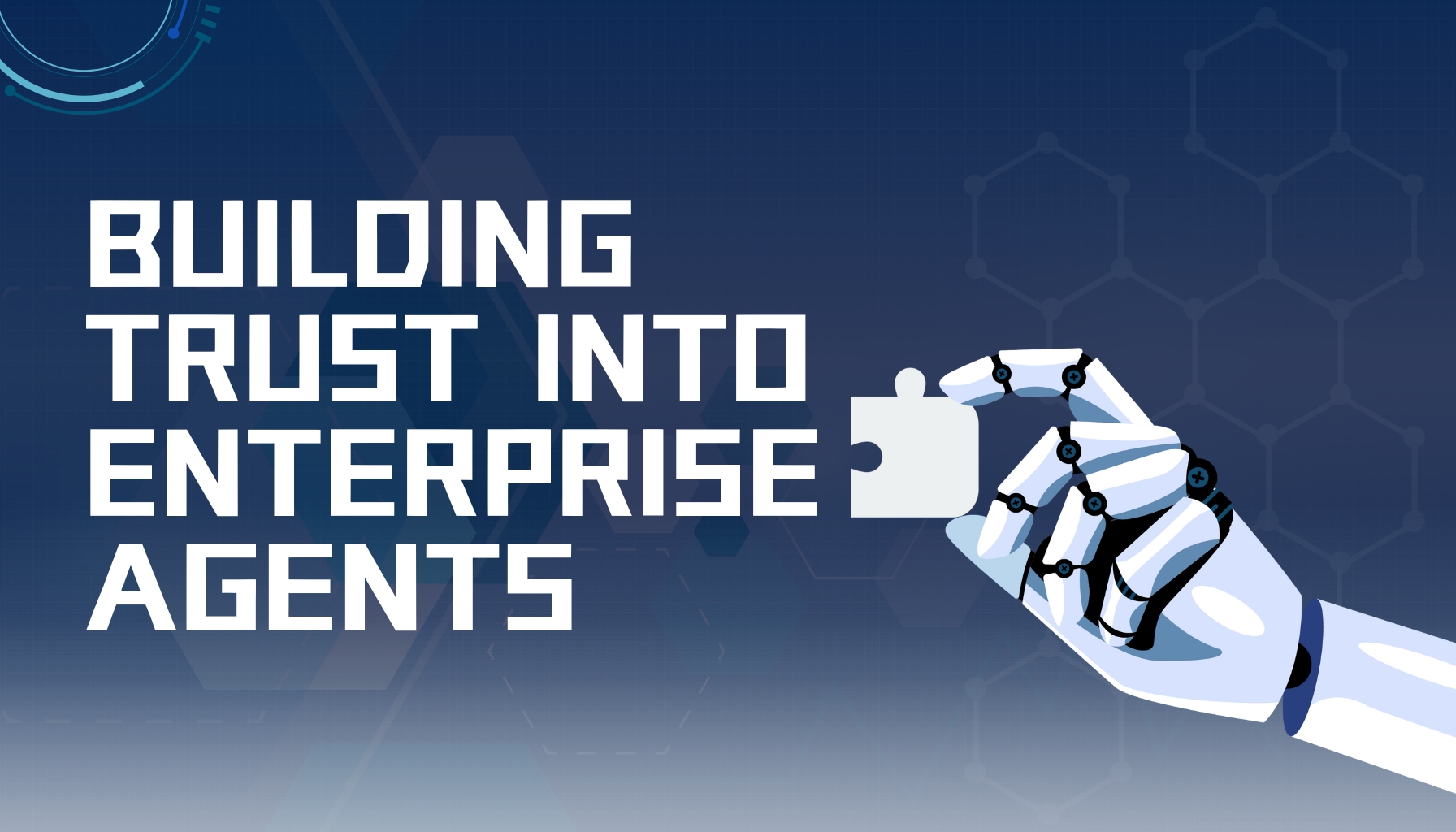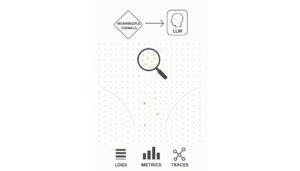Part 3 of 3: The AI SRE Reality Check
Most AI SRE vendors are selling you a single-agent fantasy. Their pitch is seductive: one AI assistant that handles all your operational needs, from incident response to capacity planning to security monitoring. It’s a compelling vision of simplicity—until you encounter the messy reality of enterprise operations.
The truth is that no single agent, no matter how sophisticated, can be an expert in every domain of modern IT operations. Real enterprise environments require specialized knowledge across databases, security, networking, application performance, cost optimization, compliance, and dozens of other areas. Each domain has its own tools, data sources, protocols, and expertise requirements.
The future of enterprise AI SRE isn’t about building better single agents—it’s about building better agent ecosystems. And at Neubird, we’re not just recognizing this trend; we’re leading it.
Beyond Single-Agent Thinking: Why Enterprise SRE Requires an Ecosystem Approach
Consider what happens during a typical enterprise incident. A performance degradation is detected in your application monitoring, but the root cause could span multiple domains:
- Infrastructure layer: Resource constraints, network issues, or cloud service problems
- Application layer: Code issues, configuration problems, or dependency failures
- Data layer: Database performance, query optimization, or connection pooling issues
- Security layer: Authentication failures, certificate problems, or policy violations
- Business layer: Traffic spikes, feature rollouts, or third-party service dependencies
This is where Hawkeye’s unique value becomes clear. As the first responder, Hawkeye rapidly scans across all these systems, correlating telemetry from infrastructure monitoring, application logs, database metrics, security alerts, and business intelligence platforms. Within minutes, Hawkeye can narrow down which domains are involved and identify the most likely root cause areas—something that would take human engineers hours of manual investigation across multiple tools.
But even Hawkeye, with its superior data integration and correlation capabilities, can’t be a deep specialist in every domain. Database optimization requires different expertise than network troubleshooting. Security incident response follows different protocols than performance tuning. And here’s the key insight: enterprises already have specialized teams—database administrators, security engineers, network specialists—each with their own domain expertise and tools.
This is why the most successful enterprise AI deployments are moving toward collaborative agent ecosystems. Hawkeye serves as the intelligent coordinator, rapidly identifying and triaging incidents, then collaborating with specialized agents that assist each domain team with their specific job functions. The DBA team gets an AI assistant with deep database knowledge and access to specialized database tools. The security team gets an agent trained on security protocols with access to threat intelligence platforms. Each domain agent becomes an expert teammate for its respective human specialists, while Hawkeye orchestrates the overall incident response and ensures nothing falls through the cracks.
The magic happens when these specialized agents can communicate and collaborate under Hawkeye’s coordination, creating a comprehensive operational response that combines rapid triage with deep domain expertise.
The Customization Imperative: MCP-Powered Enterprise Agent Specialization
Every enterprise has unique operational patterns, specialized tools, and domain-specific requirements. A generic AI SRE agent might work for simple environments, but enterprise-grade operations demand customization.
This is where Model Context Protocol (MCP) integration becomes transformative. Through MCP, enterprises can extend their AI SRE capabilities with:
Specialized CLI Tools: Direct integration with kubectl for Kubernetes operations, AWS CLI for cloud management, Azure CLI for hybrid deployments, Confluent CLI for streaming platforms, and any other command-line tools their teams use daily.
Domain-Specific Agents: Database administrators can deploy specialized DBA agents with privileged access to database internals, query performance analytics, and schema optimization tools. Security teams can integrate security agents with access to threat intelligence platforms, vulnerability scanners, and compliance monitoring systems.
Custom Workflow Integration: Through MCP, Hawkeye can integrate with proprietary internal tools, legacy systems, and specialized monitoring platforms that are unique to each enterprise.
But here’s where it gets really powerful: these aren’t isolated customizations. They’re building blocks for collaborative agent ecosystems.
Agent Collaboration in Action: The A2A Protocol Revolution
The next frontier in enterprise AI isn’t just about customizing individual agents—it’s about enabling them to work together intelligently. Google’s recently announced Agent2Agent (A2A) protocol represents a breakthrough in agent interoperability, and Neubird is at the forefront of implementing this collaborative approach.
The A2A protocol addresses a fundamental challenge: how do you enable AI agents from different systems, built by different vendors, to communicate and coordinate effectively? The answer lies in standardized agent-to-agent communication that allows specialized agents to:
- Discover each other’s capabilities dynamically
- Securely exchange information across organizational boundaries
- Coordinate actions without human intervention
- Delegate tasks to the most appropriate specialist agent
Consider a real-world scenario where this collaboration transforms incident response:
Incident Detection: Hawkeye detects a performance anomaly that suggests database involvement but requires deeper investigation.
Agent Coordination: Using A2A protocol, Hawkeye communicates with a specialized DBA agent, requesting detailed database performance analysis and query optimization recommendations.
Cross-Domain Analysis: The DBA agent identifies slow queries and connection pool issues, then coordinates with a security agent to verify that recent database access pattern changes aren’t security-related.
Integrated Response: All three agents—Hawkeye for overall incident coordination, the DBA agent for database-specific remediation, and the security agent for compliance verification—work together to provide a comprehensive resolution plan.
Outcome: What would have required multiple human specialists working across different systems is now handled by specialized AI agents working in coordination, reducing resolution time from hours to minutes.
Specialized Data Access: The Power of Agent Diversity
One of the most compelling aspects of collaborative agent ecosystems is how different agents can have access to different data sources and capabilities, creating a collective intelligence that exceeds what any single agent could achieve.
Source Code Access Agents: Some agents in the ecosystem have access to application source code repositories, enabling them to understand code-level issues and suggest specific fixes or optimizations. When Hawkeye identifies performance bottlenecks or error patterns that suggest application-level causes, it can collaborate with these agents to analyze the relevant code paths, identify problematic commits, and recommend specific code changes or rollback strategies.
Automation and Remediation Agents: These specialized agents can execute the remediation recommendations that Hawkeye provides, following enterprise change management workflows and approval processes. They have access to infrastructure automation tools, deployment pipelines, and configuration management systems, enabling them to implement fixes—from scaling resources and updating configurations to deploying patches—while maintaining compliance with organizational standards and safety protocols.
Business Context Agents: Specialized agents can access business intelligence platforms, understanding traffic patterns, user behavior, and business impact metrics. When Hawkeye detects anomalies, these agents help determine whether unusual patterns represent actual problems or expected business events (like marketing campaigns or seasonal traffic), enabling more accurate prioritization and impact assessment for incident response decisions.
Compliance and Security Agents: These agents have privileged access to security tools, audit logs, and compliance monitoring systems. When Hawkeye identifies potential security-related incidents or compliance violations, it collaborates with these agents to assess threat levels, validate security policies, and ensure that any remediation actions maintain regulatory compliance while addressing the operational issue.
When these diverse agents collaborate through protocols like A2A, they create a comprehensive operational intelligence that no single agent could match. Hawkeye coordinates the overall incident response and identifies the root cause, the source code agent analyzes the specific application changes needed, the automation agent determines the safest deployment approach while following change management protocols, and the business context agent evaluates the user impact and optimal timing for implementation—all working together under Hawkeye’s orchestration to provide holistic recommendations that consider technical feasibility, operational safety, and business requirements.
Knowledge-Powered Agent Collaboration: Making Institutional Wisdom Accessible
The power of collaborative agent ecosystems extends beyond just technical capabilities—it’s about making organizational knowledge accessible and actionable across the entire operational response. While individual agents bring specialized technical expertise, the ecosystem approach enables sophisticated knowledge integration that transforms how enterprises capture and leverage their operational wisdom.
Contextual Knowledge Coaching Across Agents: When SREs provide contextual guidance during investigations—explaining application behavior patterns, identifying service dependencies, or clarifying business impact priorities—this knowledge becomes available to the entire agent ecosystem. A coaching interaction with Hawkeye about database performance patterns during peak hours becomes available to the specialized DBA agent for future database-related incidents. Knowledge provided to a security agent about acceptable access patterns becomes context for future security investigations across the ecosystem.
Cross-Domain Learning From Incident History: Past incidents become more valuable in collaborative ecosystems because different agents can learn from incidents outside their primary domain. A database performance issue that was ultimately caused by application-level connection pool management becomes learning data for both the DBA agent and the application performance agent. This cross-pollination of incident knowledge creates collective intelligence that grows more sophisticated with each resolved incident.
Enterprise Knowledge Mining and Application: Collaborative agent ecosystems can leverage enterprise knowledge more effectively because different agents can specialize in different types of organizational knowledge. Source code agents can mine application repositories for deployment patterns and dependency information. Business context agents can analyze past incident reports to understand impact patterns and escalation procedures. Security agents can process compliance documentation to understand policy requirements. When these agents collaborate, they create a comprehensive understanding of enterprise context that informs every aspect of incident response.
The result is an agent ecosystem that doesn’t just respond to technical problems—it responds with full awareness of organizational priorities, historical patterns, and business context that makes the difference between generic troubleshooting and enterprise-aware operational excellence.
Real Enterprise Implementation: Beyond Theory
This isn’t theoretical future technology. We’re seeing early implementations of collaborative agent ecosystems in enterprise environments, with compelling results.
One of our enterprise customers—a leading AI insights company—has implemented a collaborative approach where Hawkeye coordinates with specialized agents for different aspects of their operations. When they experienced a complex issue spanning their entire AWS stack, instead of having human engineers manually coordinate between different specialist teams, their agent ecosystem handled the collaboration:
- Hawkeye identified the incident pattern and coordinated the investigation
- A specialized database agent analyzed RDS performance metrics and connection patterns
- An application performance agent examined ECS configurations and container metrics
- A cost optimization agent assessed the resource utilization implications
The result was a 90% reduction in mean time to resolution, with full root cause analysis delivered in under 5 minutes. But the real transformation was in knowledge retention—insights that previously lived only in senior engineers’ heads became institutional knowledge that any team member could access during future incidents. But more importantly, they achieved something that single-agent approaches struggle with: comprehensive analysis that considered infrastructure, application, database, and business perspectives simultaneously.
As their CEO noted: “By the time our team is paged, the root cause is already clear. We’ve reclaimed engineering time, cut down off-hours firefighting, and accelerated resolution by 10x. It’s a true force multiplier for how we operate and deliver.”
Hybrid Environment Success: Another enterprise customer—a large financial services organization—needed AI SRE capabilities across their hybrid infrastructure spanning on-premises data centers, private cloud, and AWS. Traditional cloud-only AI solutions couldn’t access their on-premises telemetry or operate within their strict data governance requirements.
Their Hawkeye deployment operates entirely within their controlled environment, coordinating with specialized agents across their heterogeneous infrastructure. The system correlates data from on-premises Splunk deployments, private cloud Kubernetes clusters, and AWS services—all while maintaining compliance with financial services regulations. The result: comprehensive operational intelligence across their entire hybrid environment without compromising security or governance requirements.
As their Infrastructure Director noted: “Most AI solutions assume you’ve moved everything to the cloud. Hawkeye works where our infrastructure actually is—and that’s made all the difference in our ability to leverage AI for operations.”
API-First Enterprise Integration: The System Integrator Revolution
While most AI SRE vendors focus on direct enterprise sales, we’re seeing a more sophisticated trend emerge: system integrators building comprehensive operational solutions that embed multiple specialized agents into unified service offerings.
Major system integrators are leveraging our API-first architecture to build managed services that combine:
- Hawkeye for incident response and root cause analysis
- Specialized agents for domain-specific operations
- Custom agents for client-specific requirements
- Integration with existing ITSM and operational workflows
This approach transforms how enterprises think about operational capabilities. Instead of building internal specialist teams or hoping their existing staff can keep up with increasing complexity, they get access to AI-powered expertise that’s embedded in their existing operational processes and enhanced through agent collaboration.
The system integrator model also accelerates the adoption of agent ecosystems because it removes the complexity of implementing and managing multiple specialized agents. Enterprises get the benefit of collaborative AI without the overhead of building and maintaining the ecosystem themselves.
The Feedback-Driven Roadmap: Building for Real Collaboration Needs
Our approach to agent ecosystem development is driven by real customer deployments, not theoretical possibilities. This production-driven evolution has led to sophisticated capabilities that you won’t find in single-agent solutions:
Advanced Incident Management Workflows: Alert filtering, deduplication, and incident-centric user experiences that coordinate between multiple agents while presenting unified interfaces to human operators.
Sophisticated Instruction Capabilities: The ability to fine-tune not just individual agent behavior, but agent collaboration patterns based on specific types of problems and organizational preferences.
Enhanced Remediation Coordination: Recommendations that consider inputs from multiple specialized agents, ensuring that solutions are comprehensive and don’t create new problems in other domains.
Enhanced RAG-Based Knowledge Integration: Expanding beyond basic knowledge base integration to sophisticated RAG solutions specifically designed for SRE teams. This includes automatic mining of enterprise documentation, integration with specialized SRE knowledge platforms, and advanced semantic search across incident history, runbooks, and organizational knowledge to surface relevant context automatically during investigations.
MCP Server Ecosystem Expansion: Growing support for specialized tools and platforms through MCP integration, enabling enterprises to extend their agent ecosystems with any operational tool they need.
The Collaborative Future: Why Agent Diversity Beats Agent Monopoly
As enterprise environments continue to grow in complexity, the single-agent approach becomes increasingly unsustainable. No matter how sophisticated an individual AI agent becomes, it can’t match the collective intelligence of specialized agents working in coordination.
The enterprises that succeed in the age of AI operations will be those that embrace agent diversity and collaboration. They’ll build ecosystems where:
- Hawkeye serves as the coordination hub for incident response and root cause analysis
- Specialized agents provide deep domain expertise in databases, security, networking, and other critical areas
- Custom agents handle organization-specific requirements through MCP integration
- Agent-to-agent communication enables sophisticated collaboration through protocols like A2A
- Human operators interact with a unified interface that abstracts the complexity of the underlying agent ecosystem
Implementation Strategy: Building Your Agent Ecosystem
For enterprises considering this collaborative approach, the path forward involves several key steps:
Assess Deployment Requirements Early: Evaluate your infrastructure distribution, governance requirements, and data residency constraints to determine the optimal deployment model. Plan for agent ecosystem deployment that accommodates your actual infrastructure reality rather than forcing infrastructure changes to accommodate AI limitations.
Start with Core Coordination: Begin with Hawkeye as your incident response and RCA coordination agent. This provides immediate value while establishing the foundation for agent collaboration.
Identify Specialization Opportunities: Assess your operational domains to identify areas where specialized agents could provide significant value—typically databases, security, cost optimization, and application performance.
Leverage MCP for Custom Integration: Use MCP integration to connect with your existing tools and build custom agent capabilities for organization-specific requirements.
Plan for A2A Integration: Prepare for agent-to-agent collaboration by designing your operational workflows with inter-agent communication in mind.
Measure Collaborative Impact: Track not just individual agent performance, but the effectiveness of agent collaboration in reducing overall incident resolution time and improving operational outcomes.
Establish Knowledge Capture Workflows: Design processes for SREs to provide contextual coaching during investigations and ensure that insights from resolved incidents are captured and made available for future similar scenarios. Plan for integration with existing documentation systems and runbooks.
Agentic Workflows for Today’s Reality
The excitement around AI agents and collaborative ecosystems is justified, but success requires building for where enterprises actually are, not just where they’re heading. Many organizations are still managing mission-critical workloads in hybrid environments with complex governance requirements. Agent ecosystems that only work in idealized cloud-native environments may be impressive in demonstrations, but they fail to address real-world operational challenges.
At Neubird, we’ve learned that the future of agentic workflows starts with solving today’s problems in today’s environments. That means building agents that can operate across on-premises data centers, private clouds, and multiple public cloud providers while respecting enterprise governance, security, and compliance requirements. It means creating collaborative agent ecosystems that work with existing tool chains and infrastructure rather than requiring wholesale technology stack changes.
The Ecosystem Advantage
The future of enterprise AI SRE isn’t about finding the perfect single agent—it’s about building the perfect agent ecosystem for your specific operational needs. While competitors are still trying to build one agent that does everything adequately, leading enterprises are building multiple agents that collaborate to do everything excellently.
At Neubird, we’re not just building an Agentic AI SRE, Hawkeye. We’re building the foundation for enterprise agent ecosystems that can adapt, specialize, and collaborate to meet the complex operational challenges of modern enterprise environments.
The question isn’t whether agent collaboration will become the standard for enterprise operations—it’s whether your organization will be ready to take advantage of this collaborative future. The enterprises that start building their agent ecosystems now will have a significant operational advantage over those that wait for single-agent solutions to somehow solve all their problems.
Because in the end, the most sophisticated agent ecosystem will always outperform the most sophisticated individual agent. And that’s not just a technical reality—it’s the future of enterprise operations.
This concludes our three-part series on the AI SRE reality check. From production-proven solutions to superior data integration to collaborative agent ecosystems, the enterprise landscape is rapidly evolving beyond the limitations of single-agent approaches.
Ready to build your collaborative agent ecosystem? Contact us to learn how Hawkeye can serve as the coordination hub for your enterprise agent ecosystem, integrating with specialized agents and custom tools through MCP and A2A protocols.
